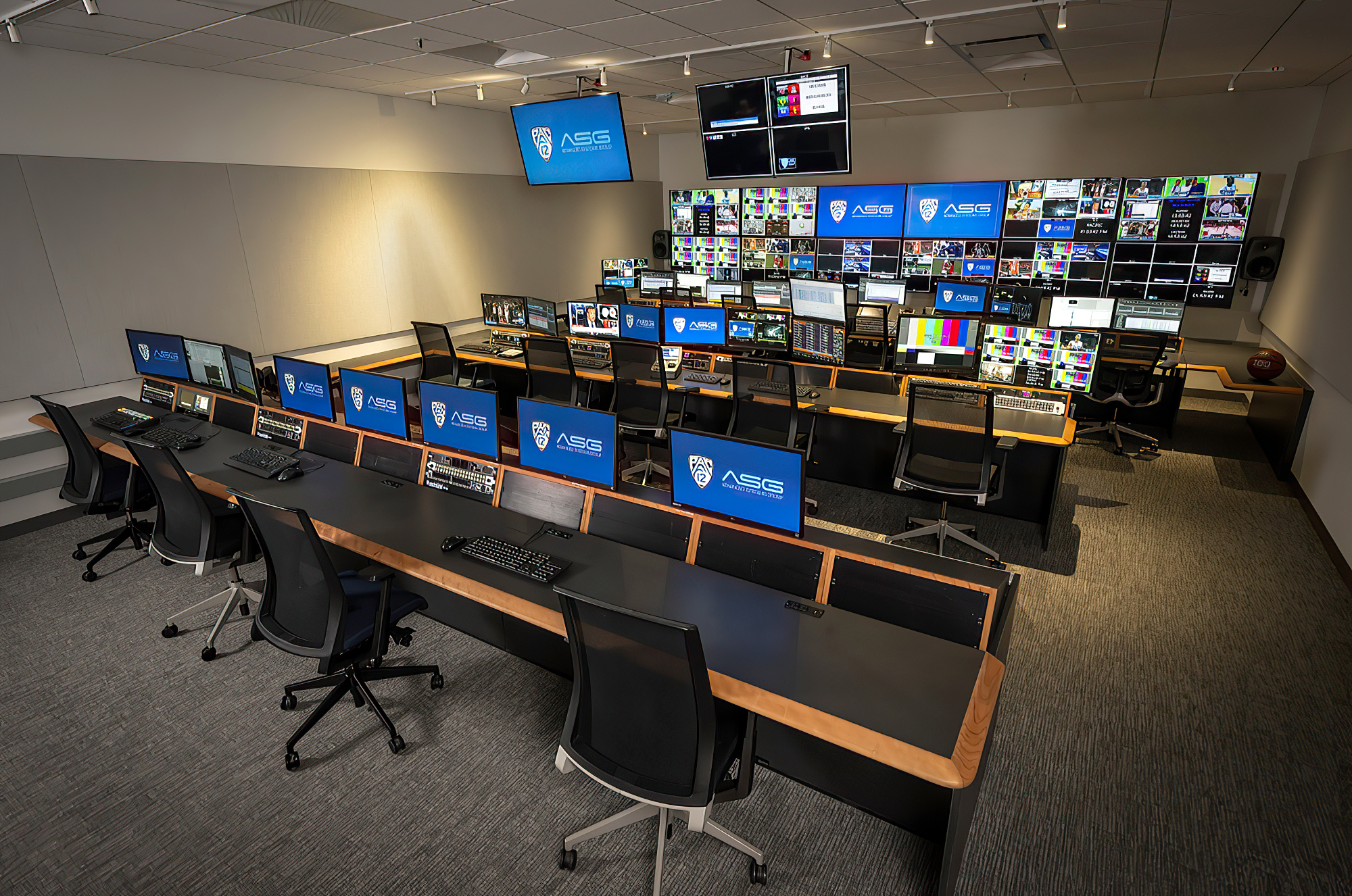
The Society of Motion Picture and Television Engineers is a highly respected organization that works to establish technical frameworks for the creation and distribution of films and television programs. Although it is not the only group involved in broadcast standards, some of its good works involve such critical signal distribution standards as the Serial Digital Interface (SDI), ST 2022 and ST 2110.
SDI, first defined in 1989, remains a popular and reliable method of transporting high-quality video signals from point-to-point within a facility or field production. (The current version of SDI is “SMPTE ST 2083.”) However, since 1989, our world has become increasingly data-oriented and it soon became obvious that transporting broadcast-quality video signals over IP networks was both necessary and advantageous. SMPTE’s first standard to marry SDI video with IT was the ST 2022 standard.

“When the need for uncompressed IP networks in live TV production arose, companies turned to the SMPTE ST 2022 family of standards, the online media-over-IP standard available at SMPTE, to build infrastructure,” said Thomas Bause Mason, SMPTE director of standards development.
“SMPTE ST 2022 was designed for content contribution, and was not well-suited for live TV production. A better standard needed to be created that reflected the needs of live TV production.”
That standard is ST 2110. First published in 2017, it is catching on quickly.
“When it comes to large-scale infrastructure, almost all new facilities built [that have] IP networks for production are using SMPTE ST 2110,” Mason said. “SMPTE ST 2110 was also greatly adopted by equipment manufacturers, and SMPTE ST 2110 products are widely available.”
Core Parts Are Done
The core parts of the SMPTE ST 2110 standards family are done and were published starting in 2017, Mason said. Since then, all documents in the family except for one (ST 2110-30) went through revisions to clarify their provisions and to fix minor issues, while considering compatibility with existing implementations. These revisions were published in 2023. (SMPTE recently announced that SMPTE Standards will now be available at smpte.org to members at no additional cost.)
When it comes to large-scale infrastructure, almost all new facilities built [that have] IP networks for production are using SMPTE ST 2110."
Thomas Bause Mason
Perhaps the biggest benefit of using ST 2110 is that it uses standard IP networks. This has many advantages, including a large body of IP specialists that can build and maintain such networks. Another big advantage is that high-speed networks suitable for live television use commercial-off-the-shelf products that are relatively common and inexpensive.
SDI, as well as it works, is for television only. SMPTE ST 2110 uses what the rest of the world uses.
Manufacturers are wasting no time building products compatible with the ST 2110 standard.
“Imagine has introduced SMPTE ST 2110 technology into almost every product family in our line,” said John Mailhot, CTO for infrastructure at Imagine Communications. “We see ST 2110 as the basis of design for almost every large media project in our pipeline, and even small/medium facilities are seriously considering the redundancy and scalability advantages of an ST 2110 approach.”

Mailhot said that Imagine’s Selenio Network Processor uses SMPTE ST 2110 to carry up to eight uncompressed UHD signals in each direction over 100G network interfaces, alongside their related audio and ANC components. This consolidation reduces the amount of cable (fiber) and the associated construction and project management time significantly.
“The ability to pick-and-choose from a marketplace of QSFP [quad small form factor pluggable] optical power options ensures that 100G [and 400G] IP connections can reach even the farthest corners of large facilities or even campuses,” he said. “In university settings, we are able to run 100G network connections between sports facilities on opposite corners of large campuses, building consolidated production environments that would have been much more expensive and difficult using traditional SDI approaches.”
Launching Products
Blackmagic Design launched two products last year using the SMPTE ST 2110 standard: the 2110 IP Converter and the DeckLink IP. The 2110 IP Converter 3x3G is a rackmount converter that converts 3G-SDI devices to 2110 IP broadcast systems, and the DeckLink IP is a family of three PCIe cards that capture and playback 10-bit uncompressed, broadcast-quality video directly into ST 2110 IP-based broadcast systems.

“Blackmagic Design views ST 2110 as an important tool for the industry,” said Dave Hoffman, business development manager for Blackmagic Design. “From a simplicity and flexibility standpoint, ST 2110 creates a universal language we can all speak and work in.”
Hoffman pointed out the features that make the company’s 2110 IP converter the right fit for many applications.
“Unlike using an array of miniconverters, the Blackmagic 2110 IP Converter 3x3G is rack-mountable and includes a front panel with an LCD, so users can walk up and change settings at any time,” he said. “The front-panel LCD also has the benefit of allowing live video monitoring of all input and output channels. Plus, the LCD includes network diagnostic tools to assist in troubleshooting issues in complex 2110 IP broadcast systems.”
Matrox Video offers both point-of-use ST 2110 converters as well as ST 2110 network adapters for OEM applications.
“ST 2110 is important for broadcasters, venue and stadium operators, and other media companies seeking to move to IT-based production workflows,” said Francesco Scartozzi, vice president of sales and business development for Matrox Video. “As an open SMPTE standard, like SDI, customers can choose best-of-breed products from their preferred vendor and maintain compatibility. ST 2110 production workflows use general-purpose networking equipment, which means users can easily upgrade an ST 2110 network from 10GigE to 25GigE, and even (in the future) to 100GigE without changing the whole infrastructure.”

Scartozzi said that another advantage ST 2110 offers is its ability to process video, audio and auxiliary data streams separately, depending on the capacity of the network. For example, with the right network connection, one Matrox ST 2110 NIC can support up to four 25 Gbps links and can process up to 32 channels of HD with full redundancy enabled.
“Matrox Video is an expert in ST 2110 and supported the standard before its SMPTE ratification,” he said. “We provide components to OEMs, who then build end-user products for media production, and are being used in ST 2110 productions worldwide today. The knowledge and expertise we gained during the development of ST 2110 OEM network cards has been poured into Matrox ConvertIP, which converts 3G/12G SDI to/from ST 2110. This lets broadcasters work with baseband signals inside their IP video network, and display ST 2110 on SDI/HDMI monitors.”
Manufacturer Agnostic
Chris Scheck, head of marketing content at Lawo, pointed out that an advantage of ST 2110 is that it is manufacturer-agnostic. That means customers can pick the best gear for their operations and production workflow, and avoid being locked into any particular manufacturer’s equipment universe.

A recent addition to Lawo’s IP-native product portfolio is .edge, its hyper-density SDI/IP conversion and routing platform with up to 192 SDI connectors on 2RU.
“We recently introduced HOME Apps for server-based multiviewer generation, up/down/cross conversion, stream transcoding and graphics insertion,” Scheck said. “A lot more HOME Apps are on the roadmap, some of which will be introduced over the coming months.”
Scheck said that both these product lines feature JPEG XS compression and decompression for lossless, yet bandwidth-saving stream transport. On top of that, Lawo’s HOME Apps support NDI, SRT, H.26x, and will support more formats/protocols as soon as they become relevant.
PAC-12’s New 2110 Facility
ST 2110 is making strides in the real world of big-time sports production as well. The Pac-12 Network, a major collegiate sports producer on the west coast, recently fired up a 42,000 square-foot broadcast and production facility that it will use for production of more than 850 live events each year.
The Pac-12 Network system, designed and installed by Advanced Systems Group, uses a hub-and-spoke design where content acquired at the sports venues is backhauled to control rooms in San Francisco. This model reduces onsite staff and minimizes reliance on costly mobile trucks.
Pac-12 also exploited the universities’ existing Internet 2 IP backbone for A/V transport and centralized production, creating the largest private IP network in the U.S. dedicated to sports. Pac-12 selected the Imagine Magellan control system for IP routing, control and monitoring, and Arista high-speed Ethernet switches. Imagine’s Magellan formed the ST 2110 orchestration backbone of the facility, while Arista’s switching and routing is the core transport component.
There were many other vendors involved in the Pac-12 build, including Calrec Artemis audio consoles, Grass Valley K-Frame video switchers, Ross XPression graphics, Evertz Dreamcatcher replay systems, just to name a few. The audio in the Pac-12 Netword system is AES67, a standard for audio-over-IP that’s part of the ST 2110 protocol. Interoperability between the two is paramount, and requires careful network orchestration so that the two transports are handled separately and all I/O’s align properly.

“Implementing audio redundancy within an IP infrastructure is not a trivial undertaking,” said Dave Van Hoy, president of Advanced Systems Group. “We got caught in a couple of places where those became very interesting challenges. Everything worked out, with many thanks to the impressive cooperation of the Calrec, ASG and Imagine teams. It was definitely a learning lesson.”
Identifying What's 2110-Compliant
The Alliance for IP Media Solutions (AIMS) is a non-profit organization founded by leading manufacturers to promote the adoption of standards as the industry transitions toward an IP future. AIMS has catalogued nearly 300 products related to SMPTE ST 2110 from 45 manufacturers (available at ).
“Originally a specialized solution for high-end or spatially constrained projects, SMPTE ST 2110 has evolved into the primary choice for designers building reliable, scalable IP-based systems,” said Andrew Starks, marketing working group chair for AIMS. “There is a tremendous innovation happening within the SMPTE ST 2110 community.”

Does this mean that the industry is rolling toward a future that is all IP and does not use SDI?
“SDI’s affordability, industry-wide familiarity, and proven reliability ensure its continued relevance,” Starks said. “Presently, most SMPTE ST 2110 systems incorporate some level of SDI integration, acknowledging its practicality and the need to support legacy equipment.
“This reality underscores the importance of interoperability between SDI and SMPTE ST 2110,” Starks added. “Such interoperability influenced key aspects of ST 2110’s design, notably in the handling of ancillary data (ST 2110-40). As SMPTE ST 2110 equipment becomes more affordable, and as the industry gains more tools and expertise in managing IP media networks, we anticipate a shift towards predominantly IP-based systems.”
The economy, familiarity and ever-growing capacity of IP networks make them a natural medium for carrying television signals. As SMPTE ST 2110 takes hold and more products are exposed to more people, expect to see ST 2110 forming the backbone of an increasing number of facilities.







